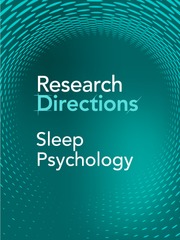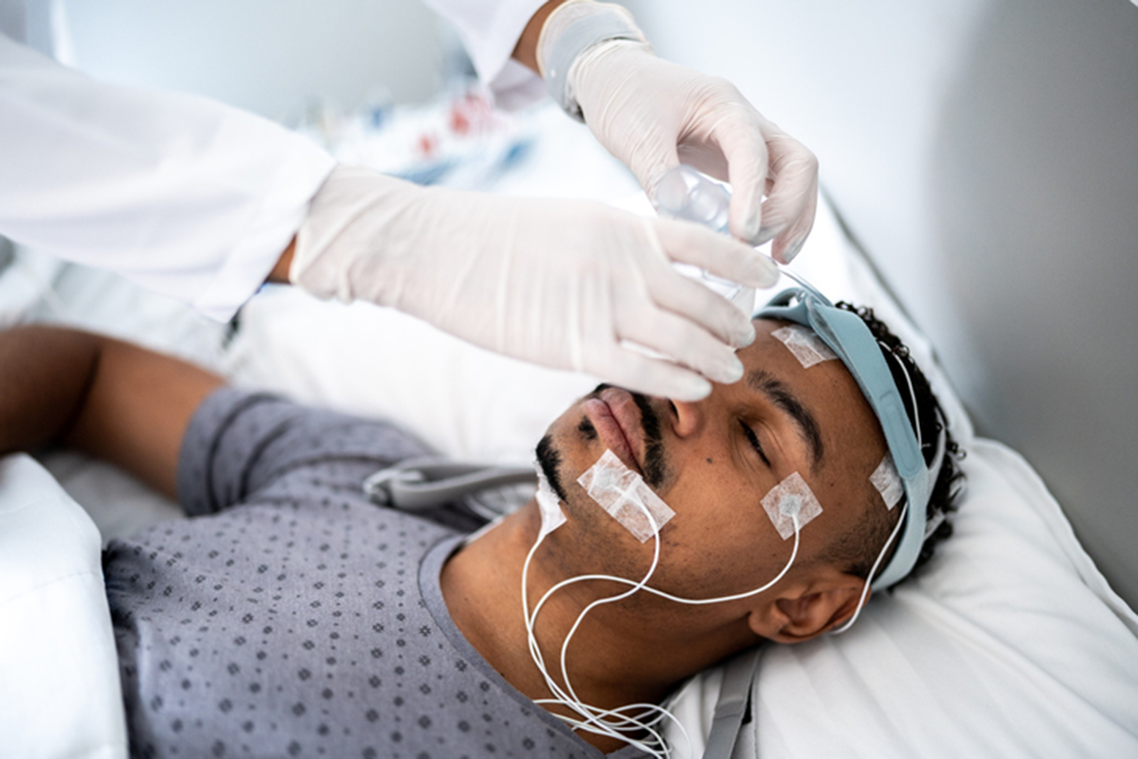Context
Clinical sleep psychology is a branch of psychological science that aims to understand and harness psychological factors (i.e., affective, behavioral, cognitive, social, and environmental) that are involved in sleep and circadian disorders. Behavioral Sleep Medicine, a branch of sleep medicine, has a similar focus (https://www.behavioralsleep.org/). Collectively, these clinical branches of sleep psychology aim to effectively evaluate and treat sleep and circadian rhythm disorders to promote sleep health. Clinical sleep psychology has a long history, including early work in the areas of insomnia, behavioral treatment for pediatric sleep disorders, dream psychology, and hypnotic sleep (Jacobson Reference Jacobson1934; McReynolds Reference McReynolds1997; Mower and Mower Reference Mower and Mower1938; Münsterberg Reference Münsterberg1915; Watson Reference Watson1928). The past 100 years have seen considerable progress in identifying psychological factors involved in sleep and circadian rhythm disorders and their treatment, particularly in insomnia and pediatric sleep disorders. Barriers to advancement persist.
Although sleep psychology was briefly recognized by the American Psychological Association as a specialty area (https://www.apa.org/ed/graduate/specialize/), the broader field of psychology has largely neglected the topic of sleep (Cartwright Reference Cartwright1978). A compounding barrier, the broader field of sleep medicine has largely neglected psychological factors in favor of biological factors involved in sleep and circadian rhythm disorders. Indeed, the International Classification of Sleep Disorders has long been “largely based on pathophysiology” (American Academy of Sleep 2014). Insomnia, however, is an exception to the historic focus on biological factors. For example, insomnia is listed first in the International Classification of Sleep Disorders (ICSD) and is classified based on self-report of the phenomenology of sleep and its psychological, social, and behavioral impact. Moreover, psychological interventions (i.e., cognitive behavioral therapy for insomnia) are widely recognized as the frontline or “gold standard” treatments (Qaseem et al. Reference Qaseem, Kansagara, Forciea, Cooke and Denberg2016; Schutte-Rodin et al. Reference Schutte-Rodin, Broch, Buysse, Dorsey and Sateia2008). Although much of the focus on psychological factors of sleep disorders has been in the area of insomnia, and there is much more to be discovered on that front, psychological factors are often overlooked or minimized, to some degree, in the majority of sleep and circadian rhythm disorders. Given the historical focus on pathophysiology of sleep and circadian disorders, it is not surprising that sleep medicine has predominately emphasized pharmaceutical, surgical, and medical device interventions for these conditions. Complementary or standalone psychological interventions for sleep disorders have made headway but continued research within sleep psychology is critical. Because classification systems “play a critical role in guiding future research agendas,” identification of psychological factors involved in these disorders is vital to informing the nosologies that guide research (American Academy of Sleep 2014). Because “therapeutic interventions are largely guided by the nosological decisions made by clinicians” (American Academy of Sleep 2014), it is imperative that psychological factors involved in sleep and circadian disorders are well understood to inform evidence-based treatments.
Submissions to this question will help advance our understanding of the role psychological factors play in sleep and circadian disorders. Our overarching question also encourages submissions that begin to address how psychological factors relate to their treatment. Specific topic areas of interest to this question include, but are not limited to:
-
Psychological determinants of sleep and circadian rhythm disorders at multiple levels, e.g., individual, family/household, community, society.
-
How sleep attitudes, behaviors, and emotions contribute to sleep and circadian rhythms disorders.
-
How psychological factors contribute to the conceptualization and classification of sleep and circadian rhythm disorders.
-
Mechanisms through which sociocultural and psycho-environmental determinants contribute to sleep and circadian rhythm disorders.
-
How adverse childhood events contribute to sleep and circadian rhythm disorders, both in childhood and adulthood.
-
Psychological pathways through which racial, gender, and socioeconomic status differences are involved in sleep and circadian rhythm disorders.
-
Mechanisms through which psychological interventions work to treat sleep and circadian rhythm disorders.
-
Social, cultural, and behavioral factors (i.e., adverse childhood experiences, education, employment, health behaviors substance use, physical exercise/inactivity, and cultural beliefs) that influence the evaluation and treatment of sleep and circadian rhythm disorders over the lifespan.
-
Behavioral and social research on the impacts of later-life transitions on sleep and circadian rhythm disorders and their treatment, including retirement, bereavement, divorce, re-partnering, caregiving, children exiting/reentering the home, residential change, and frailty.
-
Novel application of psychological principles and theories to sleep and circadian rhythm disorders.
-
Overcoming barriers to applying psychological interventions to treat sleep and circadian rhythm disorders.
How to contribute to this Question
If you believe you can contribute to answering this Question with your research outputs find out how to submit in the Instructions for authors. This journal publishes Results, Analyses, Impact papers and additional content such as preprints and “gray literature.” Questions will be closed when the editors agree that enough has been published to answer the Question so before submitting, check if this is still an active Question. If it is closed, another relevant Question may be currently open, so do review all the open Questions in your field. For any further queries check the information pages or contact this email sleeppsychology@cambridge.org.
Acknowledgments
We acknowledge Eva Lundgreen for her editorial review of formatting and grammar.
Competing interests
The authors declare none.




